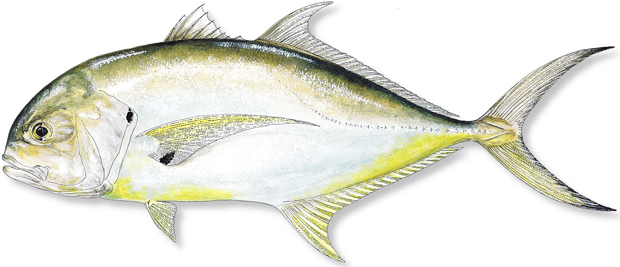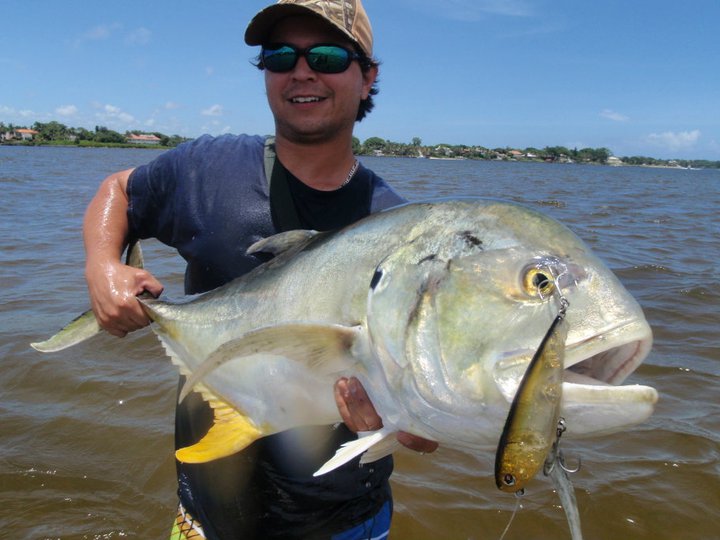
Caranx hippos
FAMILY
Carangidae
TAXONOMY
Caranx hippos (Linnaeus, 1766), Carolina, United States.
OTHER COMMON NAMES
English: Jack crevalle, common jack, couvalli jack; French:
Carangue crevalle; Spanish: Cavalla; Portuguese: Coa.
PHYSICAL CHARACTERISTICS
Body deeply compressed with a steep forehead, two dorsal fins,
a narrow caudal peduncle, and a slender forked caudal fin. The
caudal peduncle is reinforced with a series of scutes (25–42)
formed from modified bone. There are 9 spines in the first dorsal
fin and 19–21 soft rays in the second dorsal fin, and 3 spines
and 15–17 soft rays in the anal fin. The second dorsal fin and
the anal fin are both elevated. The eye has an adipose eyelid.
Scales are cycloid and small. Body color is silvery to brassy, the
dorsal surface olive or bluish green, and the caudal fin yellowish.
There is a black spot on the gill cover at equal height with
the eye. Grows to about 49 in (124 cm) in total length.
DISTRIBUTION
In the eastern Atlantic, from Portugal to Angola and into the
western Mediterranean. In the western Atlantic, from Nova
Scotia south to Uruguay and including the Gulf of Mexico; absent
from the eastern Lesser Antilles.
HABITAT
In the lower water column on coral and rocky reefs, over mud,
sand, and rubble bottoms, and into brackish estuaries, canals,
and rivers.
FEEDING ECOLOGY AND DIET
Highly predatory, feeding upon smaller fishes, shrimp, crabs,
and other macroinvertebrates. Juveniles may be preyed upon
by larger fishes, wading birds, and sea birds, while adults may
be taken by sharks or other large predatory fishes.
BEHAVIOR
Forms aggregations, although larger individuals are often solitary
or paired.
REPRODUCTIVE BIOLOGY
Forms spawning aggregations at predictable locations during
peak times annually, usually April thru May. Eggs and larvae
are pelagic.
CONSERVATION STATUS
Not listed by the IUCN.
SIGNIFICANCE TO HUMANS
Highly prized as a game fish but also harvested by commercial
and subsistence fisheries; also collected for display in larger
aquaria. May be ciguatoxic in some areas.
Other popular Animals
Photo Gallery of - Crevalle jack





 Animalia Life
Animalia Life